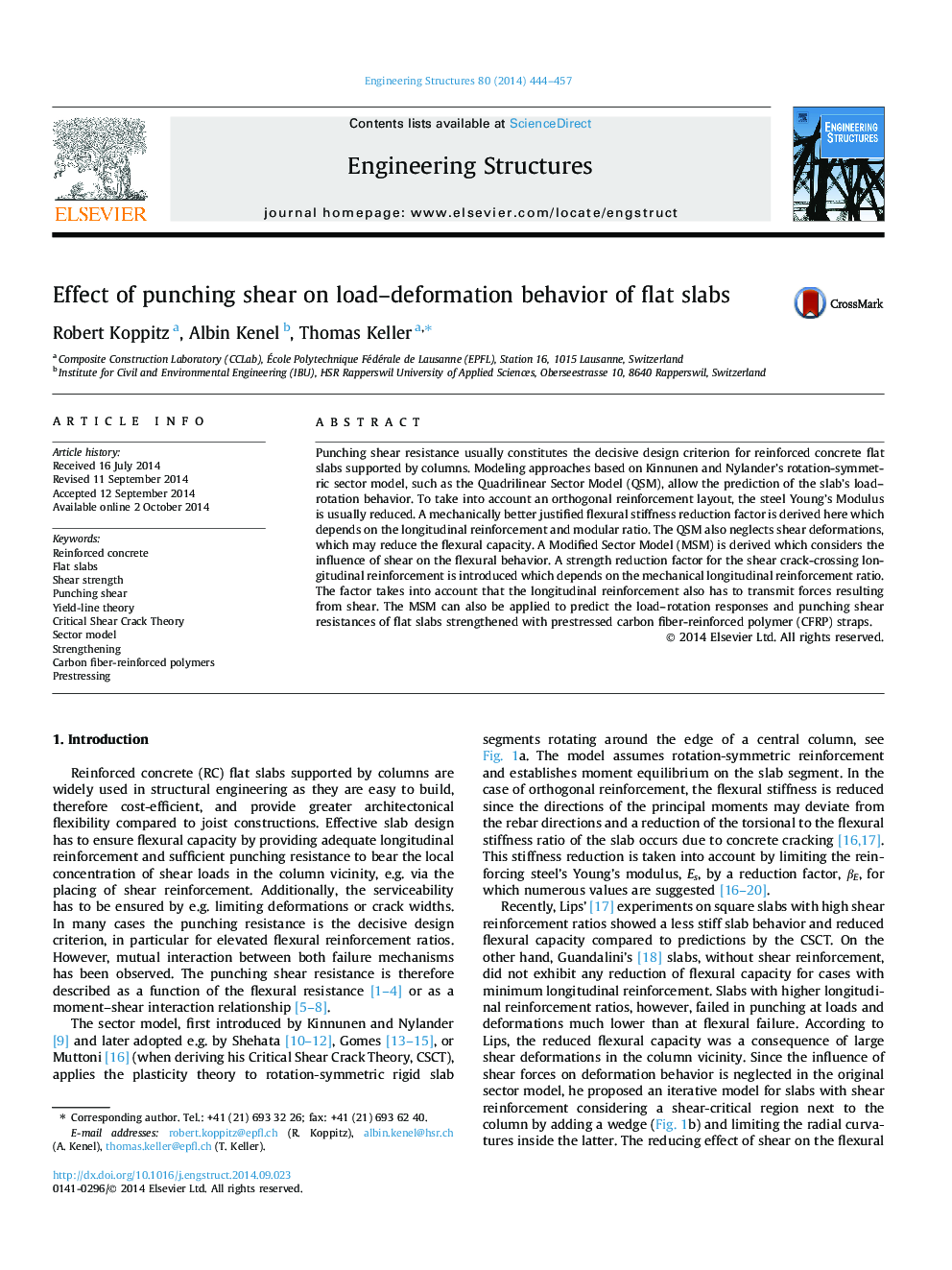| Article ID | Journal | Published Year | Pages | File Type |
|---|---|---|---|---|
| 266383 | Engineering Structures | 2014 | 14 Pages |
•Flexural stiffness reduction factor to take orthogonal reinforcement into account.•Crack-crossing reinforcement strength reduction factor to take shear into account.•Modified Sector Model to take shear influence on punching resistance into account.•Applicability of Modified Sector Model in strengthening cases.
Punching shear resistance usually constitutes the decisive design criterion for reinforced concrete flat slabs supported by columns. Modeling approaches based on Kinnunen and Nylander’s rotation-symmetric sector model, such as the Quadrilinear Sector Model (QSM), allow the prediction of the slab’s load–rotation behavior. To take into account an orthogonal reinforcement layout, the steel Young’s Modulus is usually reduced. A mechanically better justified flexural stiffness reduction factor is derived here which depends on the longitudinal reinforcement and modular ratio. The QSM also neglects shear deformations, which may reduce the flexural capacity. A Modified Sector Model (MSM) is derived which considers the influence of shear on the flexural behavior. A strength reduction factor for the shear crack-crossing longitudinal reinforcement is introduced which depends on the mechanical longitudinal reinforcement ratio. The factor takes into account that the longitudinal reinforcement also has to transmit forces resulting from shear. The MSM can also be applied to predict the load–rotation responses and punching shear resistances of flat slabs strengthened with prestressed carbon fiber-reinforced polymer (CFRP) straps.
